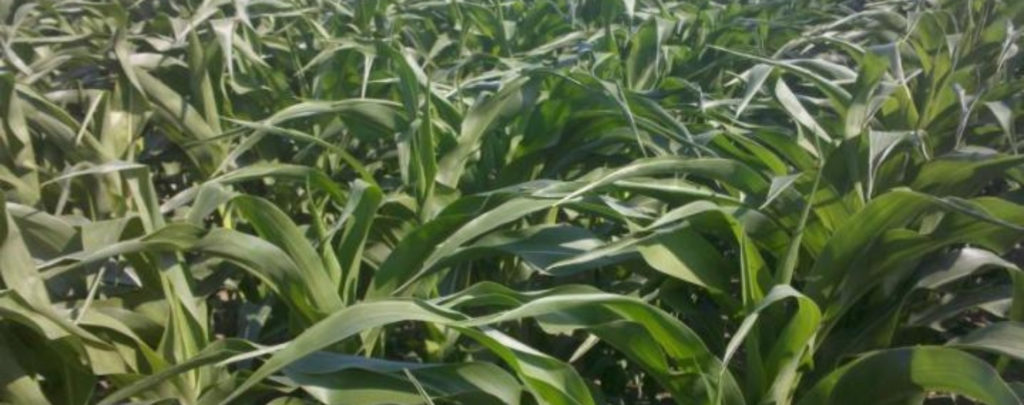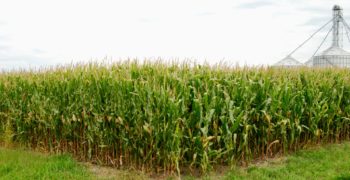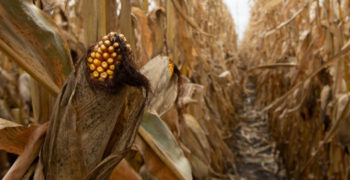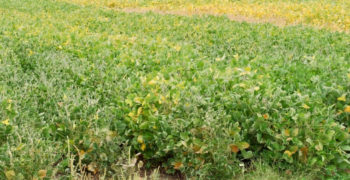Background
Corn is a very water efficient crop but also a heavy user. Water is essential to the growth of corn plants. Evapotranspiration (ET) is the combination of soil water evaporation and plant used water from transpiration. Corn uses the most water during periods of surge in growth. This usually occurs from the late stage of vegative growth to the blister stage (V10 – R2). When drought conditions are present it is likely the plant will take a yield loss. When the plant needs more water than the soil and air are allowing it cannot take up nutrients, move them, and make them available as easily. Plants in a drought stress situation are also more susceptible to insect or disease damage due to lower plant integrity and strength.
Symptoms
- Corn leaf rolling
- Yellowing of lower leaves
- Greying of leaf tissue (extreme conditions)
Management
In a drought stress situation management can vary from field to field. Each field has its own individual characteristics. These include hybrid planted, soil type and moisture, tillage, water supply, and overall management. Some preventative measures you can take to avoid drought stress include selecting for drought tolerant hybrids and doing soil tests of your fields. These practices allow you to make a better decision on when, where and what to plant to avoid future drought stress. If you find yourself in a drought stress situation there are some ways to help save your yield.
Hybrid selection can be the best defense against drought stress. Look for hybrids that contain the droughtgard trait. Droughtgard hybrids have a genetic trait built into them to allow the plant to continue sending nutrients to the ear and making grain even during times of low moisture and stress. The alternative to a trait is a genetic characteristic, or hybrids that naturally show strong drought and heat stress tolerance. Hybrids like 64A15 DG VT2 contain the DroughtGard trait while hybrids like 46A20, 50A19, 61A22, 63A13, and 64A22 have a strong natural drought stress tolerance.
| Stage of Development | Percent Yield Reduction (from 4 consecutive days of visible wilting) |
| Early Vegatative | 5-10 |
| Tassel Emergence | 10-25 |
| Silk Emergence, Pollen Shedding | 40-50 |
| Blister | 30-40 |
| Dough | 20-30 |
Sources
https://extension.psu.edu/managing-drought-stressed-corn
https://crops.extension.iastate.edu/cropnews/2017/07/influence-drought-corn-and-soybean
https://www.ag.ndsu.edu/cpr/plant-science/water-use-in-corn-and-late-season-drought-stress-08-16-18
https://www.farmprogress.com/story-effects-drought-stress-corn-plant-9-61217
http://corn.agronomy.wisc.edu/aa/a046.aspx



